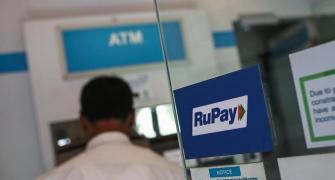The need for larger investment in infrastructure that is the biggest shortcoming, says A V Rajwade.

During his recent visit to the US, Prime Minister Narendra Modi met the chief executives of several American corporations, presumably to market India as an investment opportunity.
Press reports indicate that most of the CEOs present were from enterprises in the service sector (Amazon, Google, Cisco, Microsoft, Mastercard etc) and few from the manufacturing or industrial sectors, when there is a great need to increase the contribution of these segments to our gross domestic product (GDP), growth and job creation.
In the last 70 years, no Asian economy has grown fast and consistently without rapid expansion of the manufacturing sector.
And, the government’s own objective for “Make in India” is to increase the contribution of the manufacturing sector to 25 per cent of GDP by 2025, from the current level of around 16 per cent.
This preponderance of service sector CEOs in the meeting is also reflected in the actual inflows of foreign direct investment (FDI) in India, in which manufacturing has a very small proportion - but manufacturing dominates outflows.
General Motors recently announced closure. Lafarge, the cement giant, has sold its holdings.
One wonders whether cases like the tax demand on Cairns UK, currently under international arbitration, has something to do with the issue. (Some US investors in Cairns had requested their government to raise the issue during the Prime Minister’s visit.)
Nokia also left India because of tax issues. Posco and Arcelor Mittal seem to have given up the idea of investing in Indian manufacturing.
Nor do domestic entrepreneurs seem very enthusiastic about creating new capacity. Project investments have fallen sharply in the first quarter of 2017-18, even as stalled projects have ballooned.
As for FDI, do our low sovereign ratings by international agencies have something to do with this?
One doubts, but it is humiliating to see policymakers of the world’s third-largest economy (in public-private partnership terms) pleading for higher ratings; adopting fiscal deficit targets at least partly to please international agencies even at the cost of starving the economy of needed investments.
On the subject of sovereign ratings and how much they matter, one recent case is worth recalling.
China was downgraded by Moody’s a couple of months back.
This has not stopped the European Central Bank from starting to invest part of its reserves in the Chinese currency - or MSCI from including China’s “A” shares (that is, those traded on the domestic exchanges) in its index of international equities.
The introduction of a uniform Goods and Services Tax (GST) from July 1 should help ease of doing business in India. (We currently rank a low 130 in the World Bank’s rankings.)
President Pranab Mukherjee praised the prime minister and the finance minister for this reform, which governments of all hues had tried to implement for decades without success. (Mukherjee should know the difficulties - he himself tried to make the change when he was the finance minister, but failed despite the full backing of the then prime minister.)
But it is perhaps the need for larger investment in infrastructure that is the biggest shortcoming.
Infrastructure projects are, almost by definition, capital-intensive, with long gestation periods and not really suitable for commercial bank finance. They need public funding.
But self-imposed fiscal constraints have passed on the burden to the banking system.
There is no empirical evidence to suggest that public debt beyond 60 per cent of nominal GDP is risky or counterproductive. (The euro zone’s parallel is not relevant for us: The euro is, for public debt purposes, a foreign currency for member countries.)
The other problem in manufacturing growth is that bank lending to industry has slowed down considerably after non-performing assets grabbed the headlines.
In the latest Financial Stability Report, the Reserve Bank of India has emphasised that the stressed banking sector may drag down growth.
This apart, the introduction of the new accounting standard (Ind-AS) would mean greater provisioning and add to the capital needed for meeting the Basel III norms.
Mitigating the bad debt problem and recapitalising banks for them to increase lending, both would need substantial commitment of public resources; institutional and regulatory reforms alone may not do the trick.
Our prime minister has demonstrated his willingness to take bold decisions, some recent examples being demonetisation, the move to privatise the perpetually loss-making Air India and the introduction of GST. (In a recent full-page article, Financial Times headlined GST as a “great tax gamble”.)
Will he be bold enough to relax fiscal constraints that are coming in the way of both infrastructure investment in the economy and resolving the bad debt problem on a sustainable basis?
Photograph: Reuters
A V Rajwade is chairman, A V Rajwade & Co Pvt Ltd.










